Innovation meets tradition
How regenerative agriculture thrives
at Moreland Farms
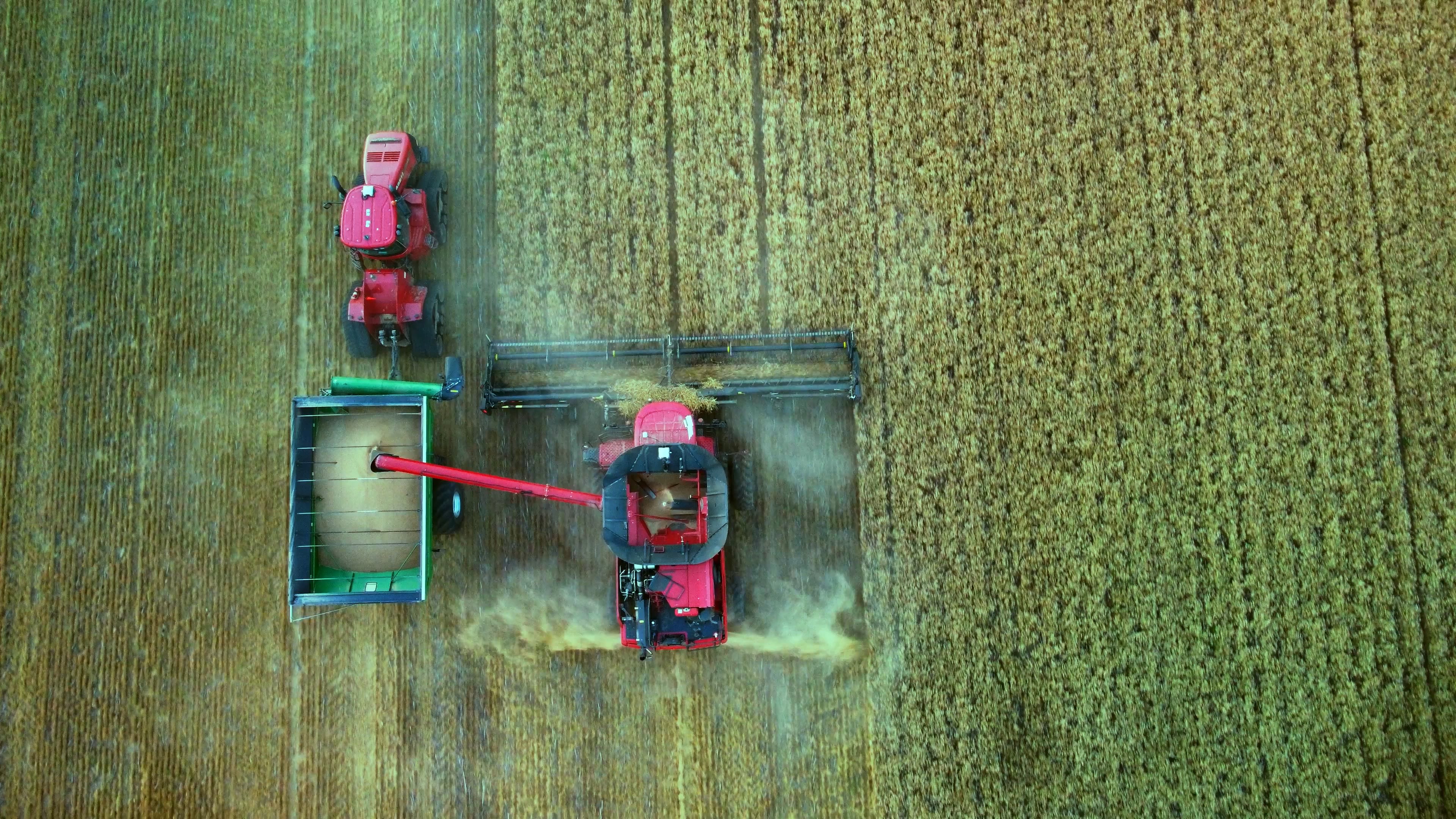
On a blazing hot day in June, Matt Moreland sat behind the wheel of a combine, harvesting acre upon acre of wheat. While many American farmers would be spending the next weeks tilling their fields into neat rows, eliminating stubble from the freshly reaped harvest, Moreland’s son James, 27, would follow in his tracks with a planter the very next day—placing soybean seeds directly into the nutrient-rich wheat residue.
Moreland, 54, is a fourth-generation farmer who works alongside the fifth generation: his three sons, all of whom returned to the farm after graduating from college. Eventually, he hopes to pass the 15,000-acre Moreland Farms to the sixth generation, consisting so far of four bubbly young granddaughters.
Moreland’s strategy for ensuring the longevity of the Oklahoma-based family business: continuous innovation, “outside-the-box” thinking and an approach known as “regenerative agriculture”.
Traditionally, farmers have planted the same crops in the same fields, year after year, and tilled extensively—plowing the soil between plantings to remove weeds and loosen the soil. Over time, though, these practices are deeply damaging to the soil and—through the release of carbon that plants otherwise store in the earth—harmful to the climate.
Regenerative agriculture, by contrast, involves low-till or no-till farming, which preserves roots and beneficial insects while enabling the soil to absorb moisture—and sequester carbon. Regenerative agriculture also involves continuous crop rotation, which allows a diverse array of microbes to thrive while reducing erosion. Another key tenet of the method, as practiced by Moreland Farms, is “precision agriculture,” an effort to minimize the use of chemicals.
Under Matt’s supervision, Moreland Farms began transitioning to no-till farming and continuous crop rotation more than a quarter-century ago. This summer, 7,000 acres of wheat are being replanted with soybeans, while another 7,000 acres are filled with corn that will be harvested in the fall. Next year, the fields will be reversed.
“Farmers are the first environmentalists and the first economists,” Moreland says. “When you’re in a tilling situation, all you do all summer is buy diesel and burn diesel. No-till works because the economics of it works and the environmental part works.”
In the nearly three decades since Moreland Farms transitioned to regenerative agriculture, yields have consistently increased each year while chemical inputs and diesel consumption have steeply declined. In 2021, Moreland Farms used 2.14 gallons of diesel per acre for its non-irrigated wheat, corn and soybean crops—less than half the amount used by nearby farms practicing conventional tillage, according to data from Kansas State University. Moreland Farms used a third less herbicide than neighboring farms last year.
Moreland Farms’ grid soil sampling data shows a 56 percent increase in soil organic matter between 2013 and 2020, from 1.6 percent to 2.5 percent. While those raw numbers may seem small, the Natural Resources Defense Council estimates that each one percent increase in organic matter helps soil hold an additional 20,000 gallons of water per acre. Absorbent soil is more resistant to droughts as well as floods, resulting in higher yields and less runoff.
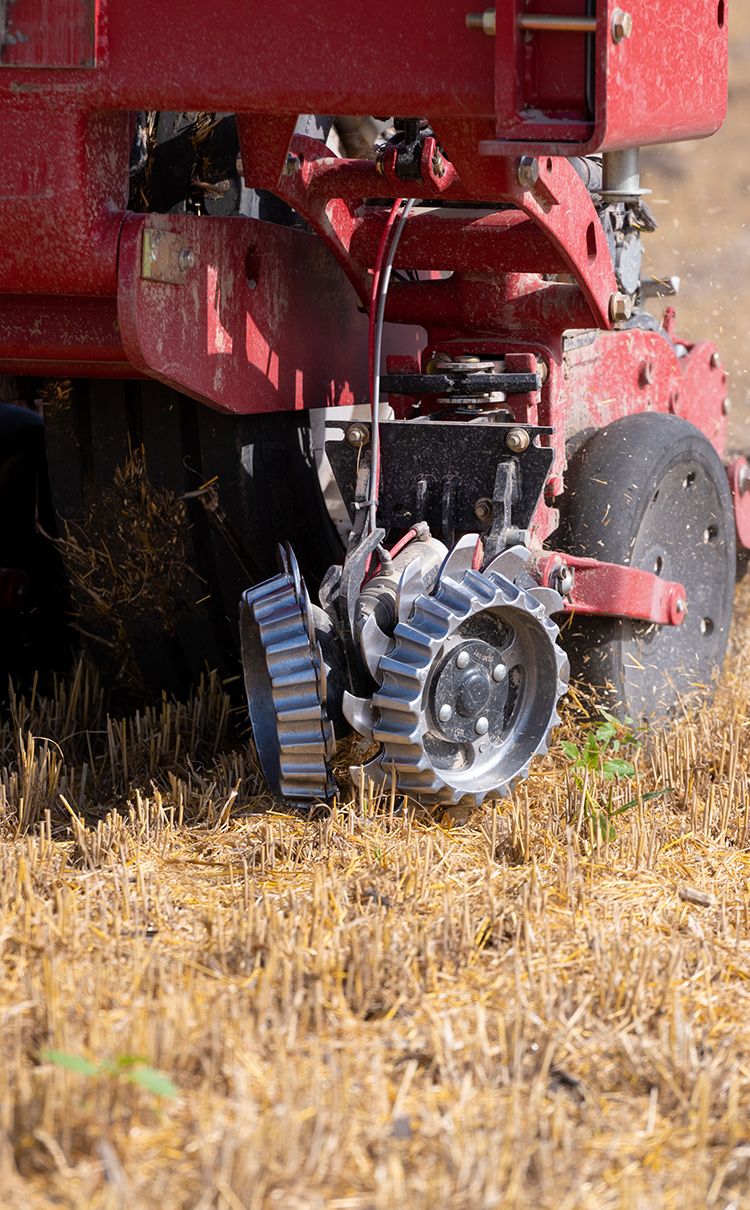
A planter distributes soybean seeds into the previous (wheat) crop’s residue.
A planter distributes soybean seeds into the previous (wheat) crop’s residue.
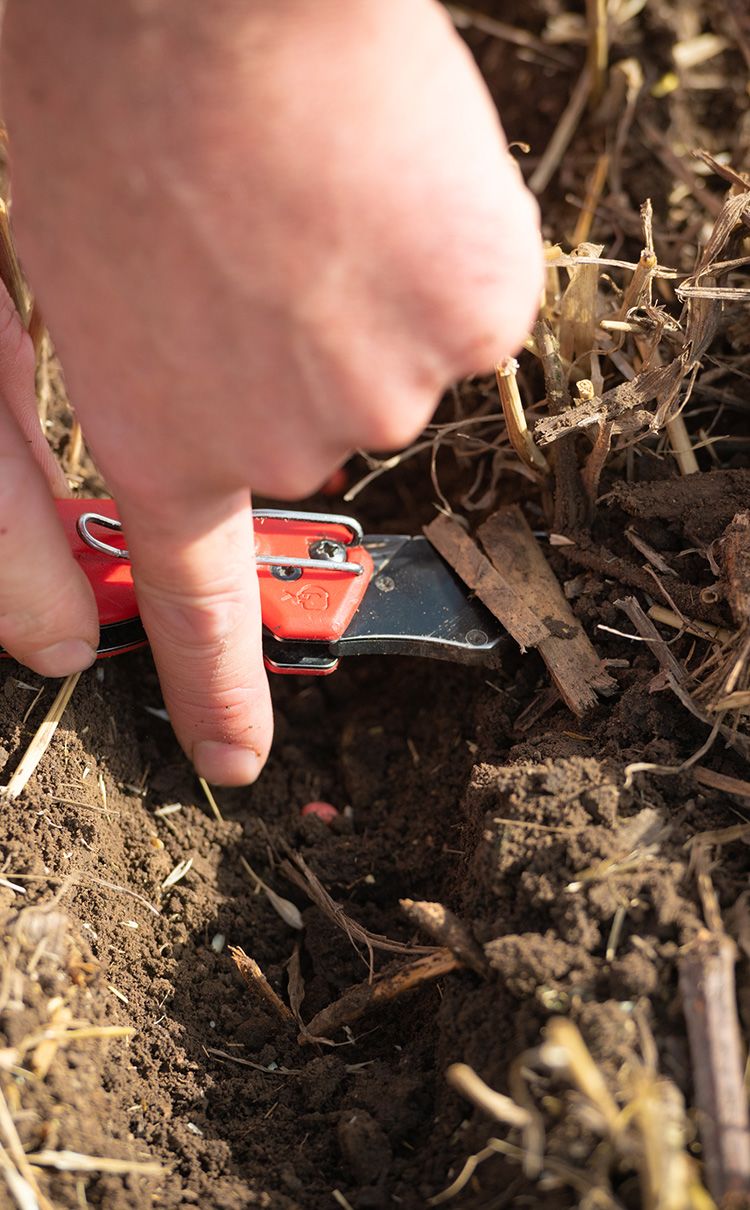
James Moreland checks the placement of soybean seeds, to ensure the planter deposited them deep enough into the ground.
James Moreland checks the placement of soybean seeds, to ensure the planter deposited them deep enough into the ground.
Inheriting a love of
the land
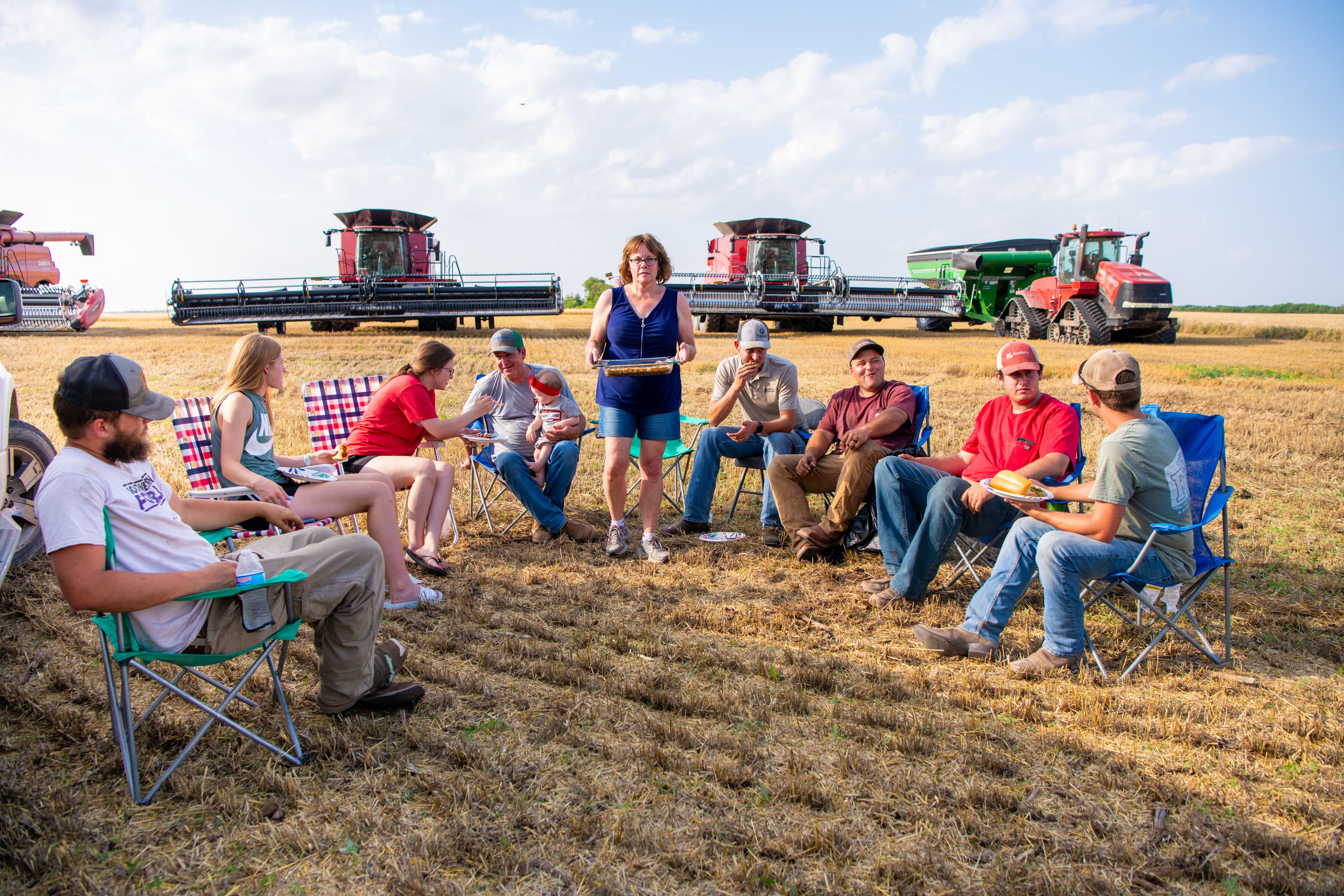
Moreland’s maternal great-grandparents founded Moreland Farms, which stretches from north-central Oklahoma into southern Kansas, more than a century ago. Matt inherited his love of the land from both sides: His father’s family is Native American, and Moreland is an enrolled member of the Chickasaw Nation.
Moreland’s parents were math teachers. They farmed a few hundred acres on the side, “just enough to get me fully hooked,” Moreland says with a smile. He left for Grinnell College in 1986, with no intention of farming professionally. “Financially it didn’t make any sense,” he recalls. “Everybody was going broke.”
When Moreland was a sophomore economics major at Grinnell, his uncle left farming because the business had become too difficult. As a side project, Moreland rented his uncle’s 400 acres from his grandmother and took out a loan for a tractor, combine, plow and planting equipment.
After Moreland graduated, he and his future wife, Lisa Laue (whom he met at Grinnell), planned to settle in Kansas City. He would work for an agricultural bank, while she would earn her master’s in social work. Then Moreland had a fateful conversation with his college adviser.
“You really seem to have a passion for production agriculture,” Moreland recalls him saying. “Why aren’t you considering going back to the farm?”
Something clicked. Moreland told Laue that the farming life was his calling. “My life flashed in front of me,” Lisa Laue Moreland wrote in her recently published memoir, Seven Miles From Asphalt: Lessons Learned on a Family Farm. Back then, she recalled, she didn’t even own a pair of jeans.
Graduates of liberal arts colleges like Grinnell don’t typically become farmers. In retrospect, Moreland says, a liberal arts education was exactly what he would need for a life spent farming with an eye toward the future.
“In the ‘80s, state schools would have been teaching me how to farm in the ‘70s,” he says. “I needed to learn how to learn.”
This proved especially critical starting in 1996, when Moreland’s learning prompted the switch to regenerative agriculture. “That was quite different than anything that had gone on in this area,” he recalls. “It was a lot of, ‘Let’s think outside the box.’”
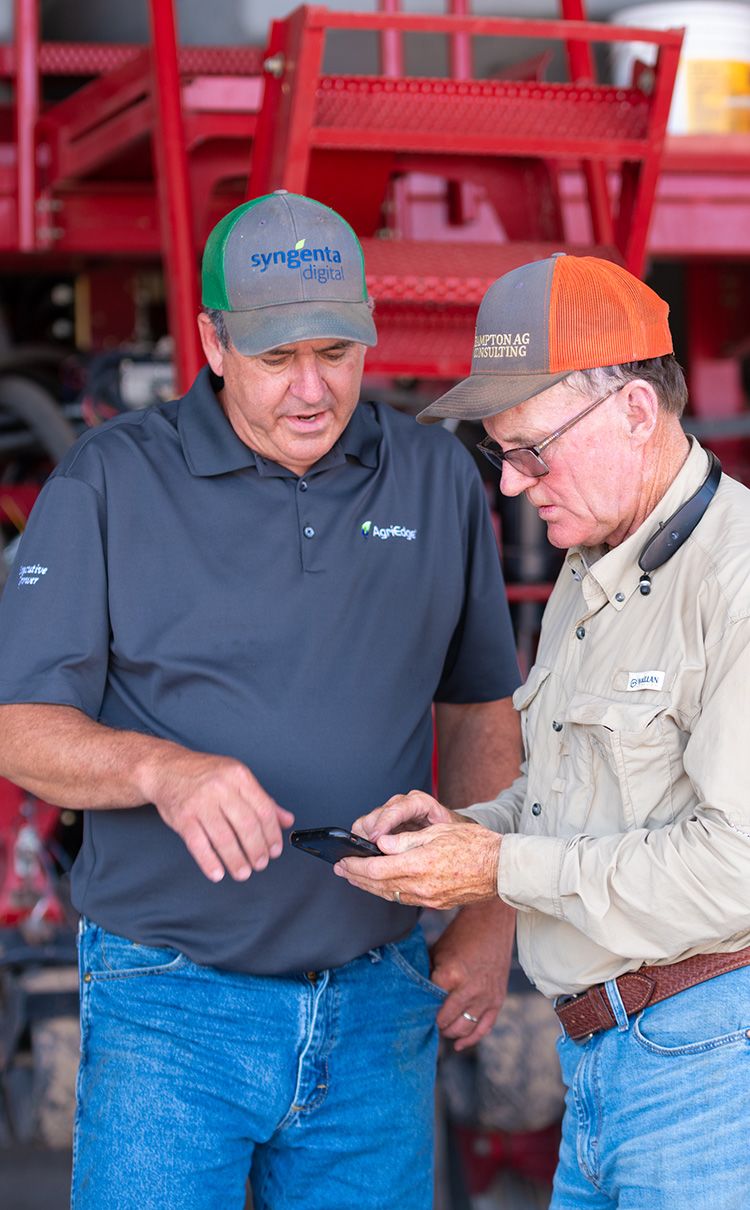
Matt Moreland and Monte Hampton, an agronomist who is Moreland Farms’ crop consultant.
Matt Moreland and Monte Hampton, an agronomist who is Moreland Farms’ crop consultant.
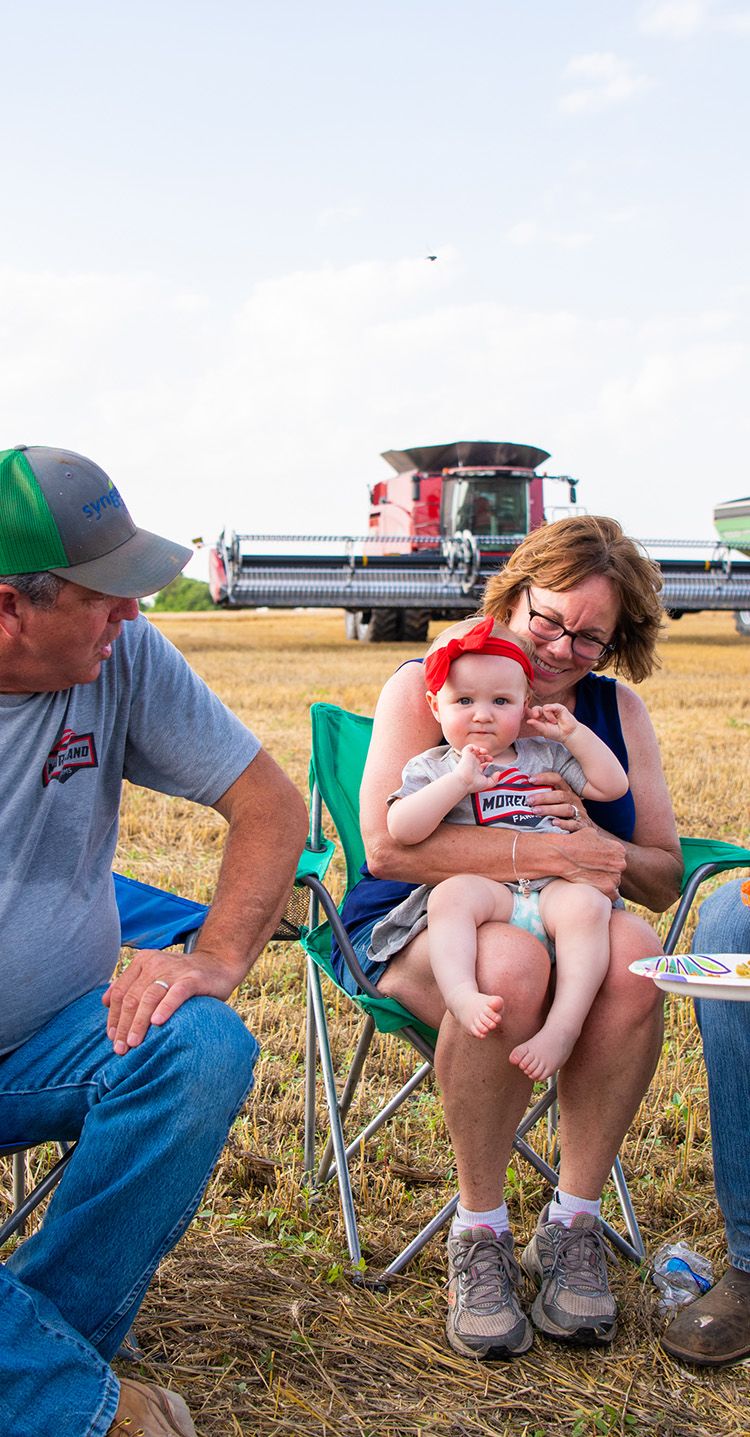
Lisa Laue Moreland and her granddaughter Andi, age 1.
Lisa Laue Moreland and her granddaughter Andi, age 1.
Freedom to farm
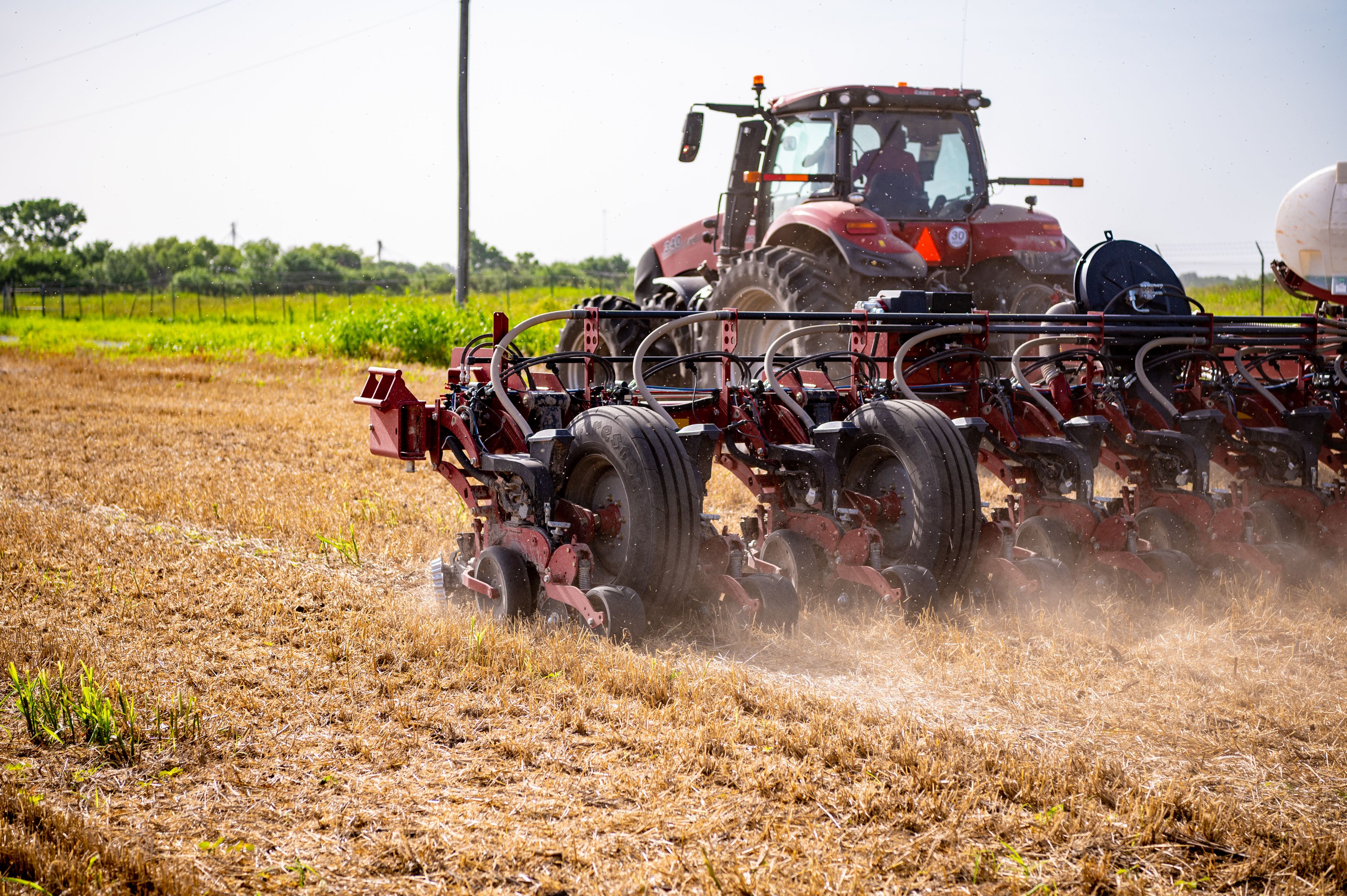
In 1996, Congress passed the “Freedom to Farm” bill, which effectively gave farmers more flexibility in what crops they planted, by removing restrictions that had incentivized them to plant the same crops year after year.
The farm was expanding, and the family was, too. Matt, Lisa and their helpers—including Matt’s father, Jimmie, who at age 89 is still involved in the farm—were stretched thin. “We were looking for a better way to do what we were doing,” Matt recalls. “We didn’t want to spend all summer sitting on a tractor digging dirt.”
Others were starting to dabble in no-till farming. A group called No Till on the Plains had formed nearby; Moreland began attending their conferences. He and Lisa chose only a few fields first, perhaps 300 acres, to see if no-till was feasible and to work through problems. Over time, they transitioned the entire farm to no-till.
Some neighboring farmers were skeptical. Even Moreland’s grandmother, Neva Quillin, initially disapproved. “When I first told her we're not going to take that dirt and turn it over, we’re not going to have black, clean fields with no residue showing, she did not like that,” he recalls. “That's not what she was used to.” At the same time, she had lived through the Dust Bowl, witnessing the ravages of wind on tilled soil.
“She never wanted the land to blow,” Moreland says. “Once she understood that no-till was totally supportive of that soil conservation, she embraced it.”
Studies have shown that regenerative agriculture can combat climate change, by capturing carbon that would have been released during tillage. At the same time, Moreland sees regenerative agriculture as critical to coping with the weather extremes that climate change has wrought.
“We have wetter wets, drier dries, hotter hots, colder colds,” he says. “Through regenerative ag, we’re making our soil more resilient and healthy. Our crops have a better ability to survive.”
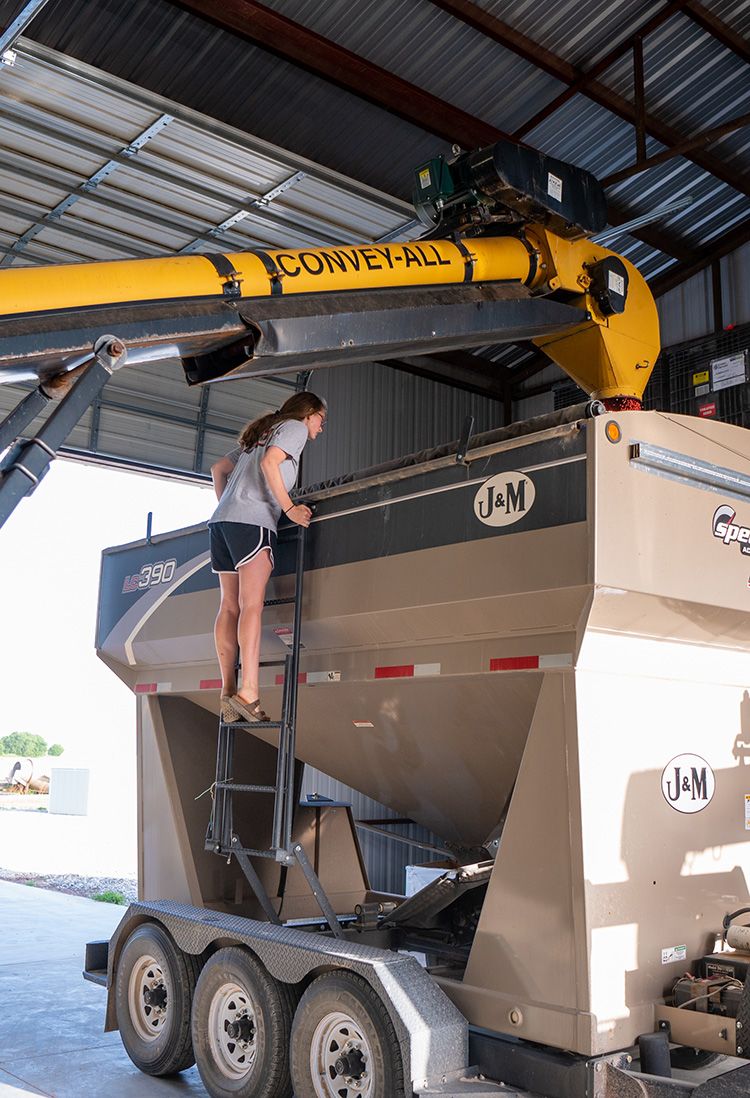
Liz Moreland monitors soybean seeds being deposited into a tender. Once it’s full, she’ll bring the tender to her husband, James, for planting.
Liz Moreland monitors soybean seeds being deposited into a tender. Once it’s full, she’ll bring the tender to her husband, James, for planting.
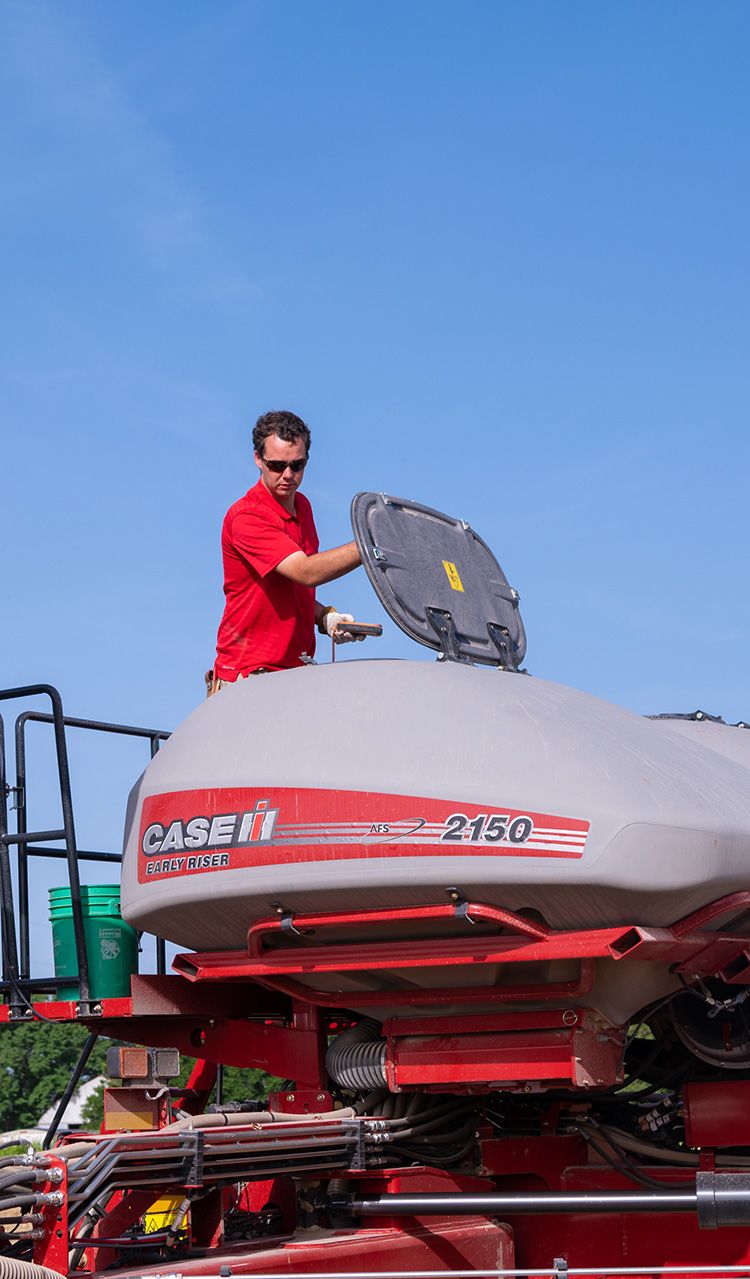
James Moreland checks to see how many soybean seeds are in his planter.
James Moreland checks to see how many soybean seeds are in his planter.
Precision agriculture in action
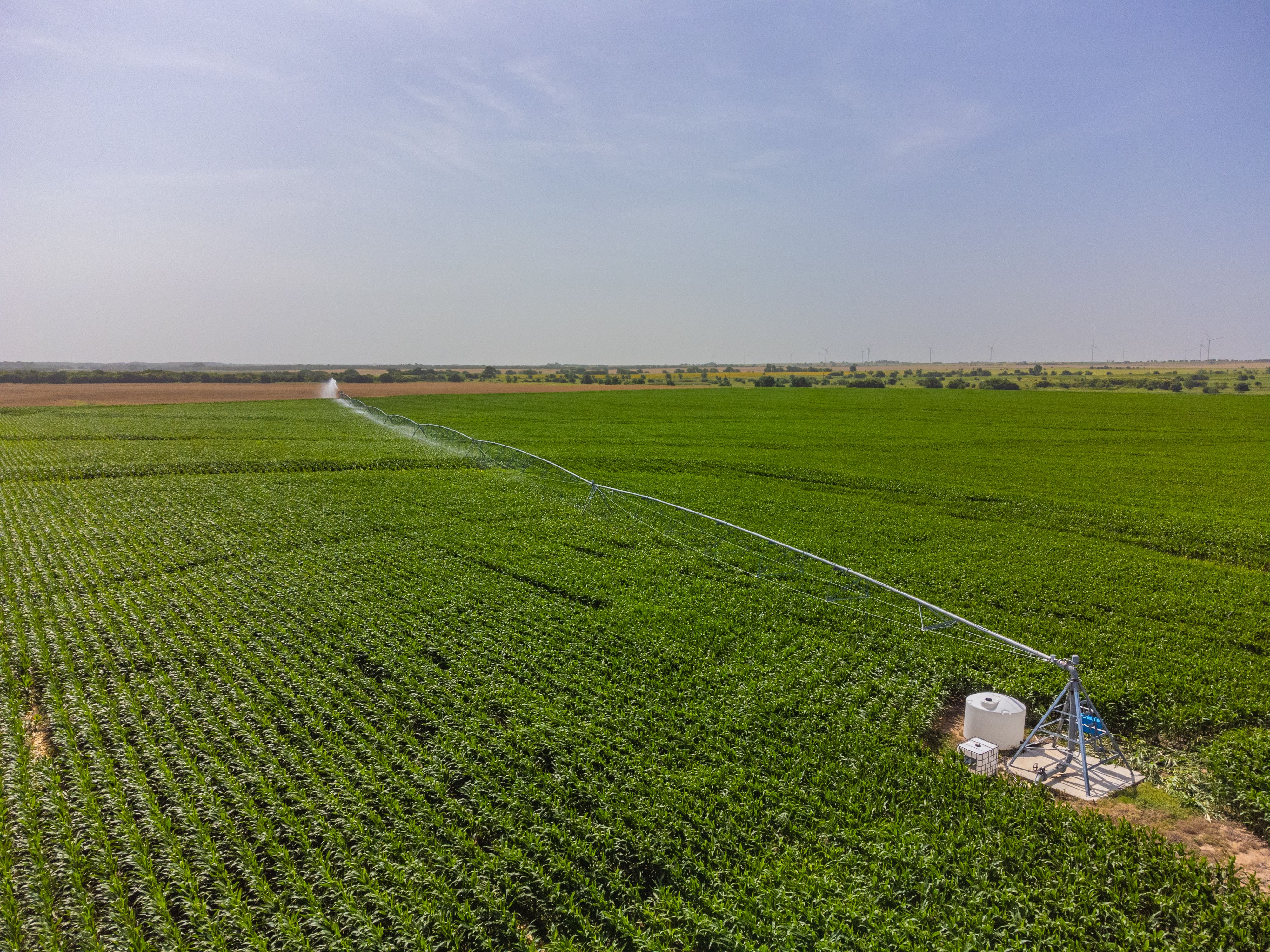
“Precision agriculture” is another component of regenerative agriculture that’s on full display at Moreland Farms. The family embraces innovation at every turn, experimenting with drones, sophisticated irrigation systems, digital weather sensors and other technologies to minimize the farm’s dependence on chemicals and make each application as precise as possible.
In one example, the Morelands use Syngenta Group’s Cropwise tool—which combines artificial intelligence, agronomic data and satellite data—to determine which seeds and crop protection products are most effective on which parts of a field. Through continuous soil sampling, they seek to maximize yield and soil health while minimizing chemical inputs.
“We’re big data people,” Moreland says. “We try to never apply one pound more of a nutrient than is needed and never apply one pound less than the crop needs.”
Moreland feels that much of the dialogue around agriculture’s future and its impact on the earth has been muddled by misunderstandings
“My soil is my best investment,” he says. “Being a steward of the land is caring for it and leaving it better than you found it. I don't have a field right now that I can’t say is better than when I started.”
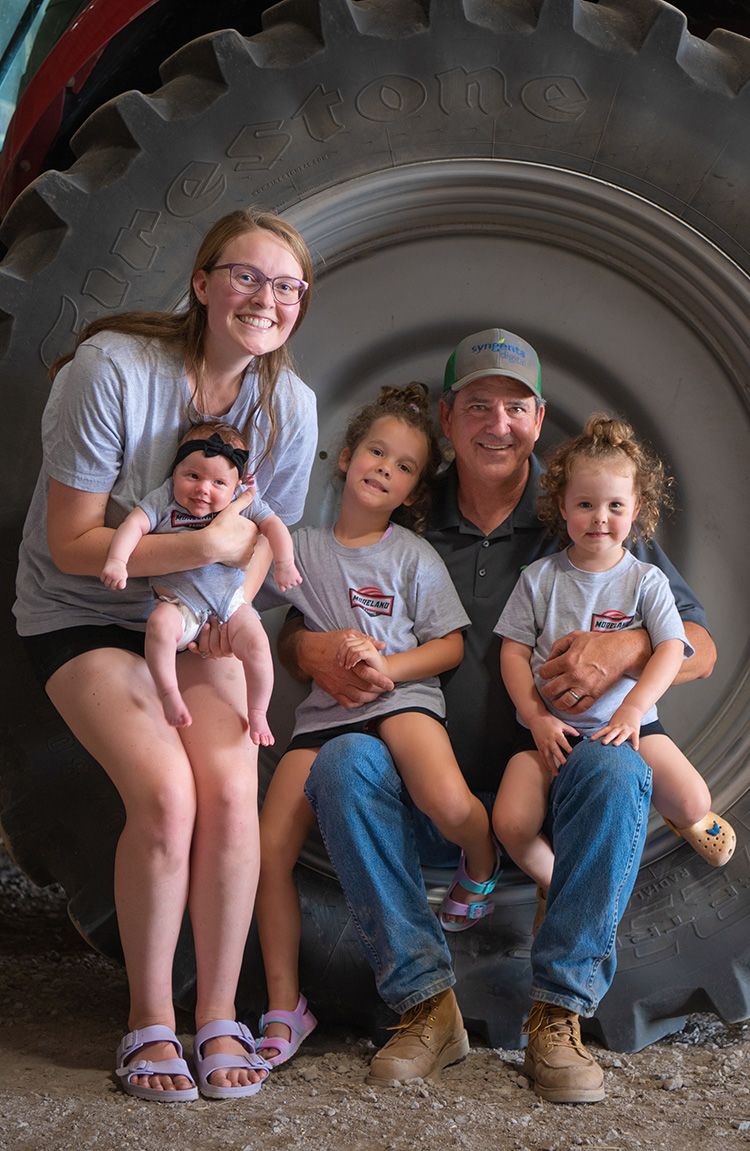
Liz Moreland and Matt Moreland with Liz’s daughters Ramie, Roslyn and Ruby.
Liz Moreland and Matt Moreland with Liz’s daughters Ramie, Roslyn and Ruby.
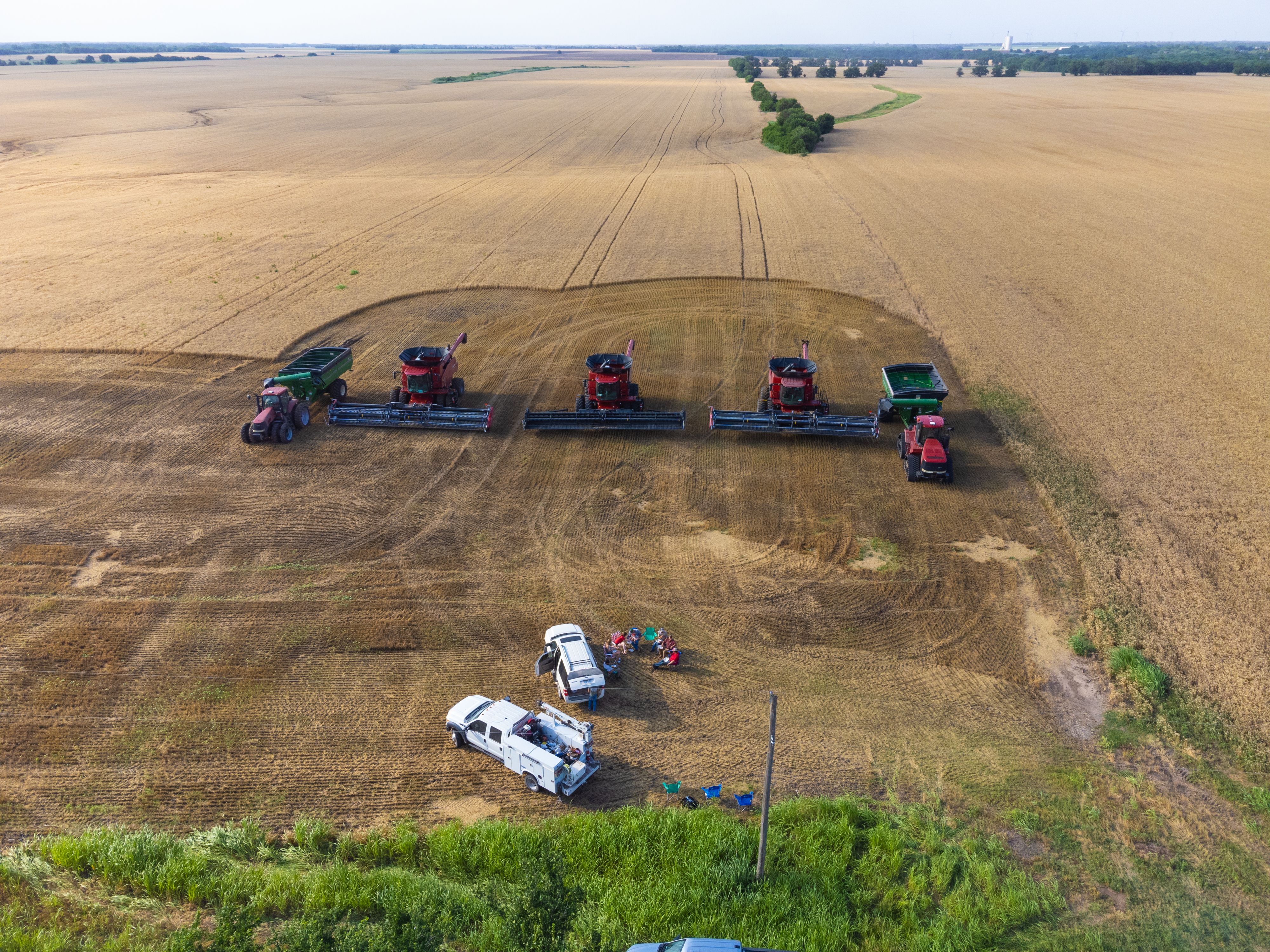
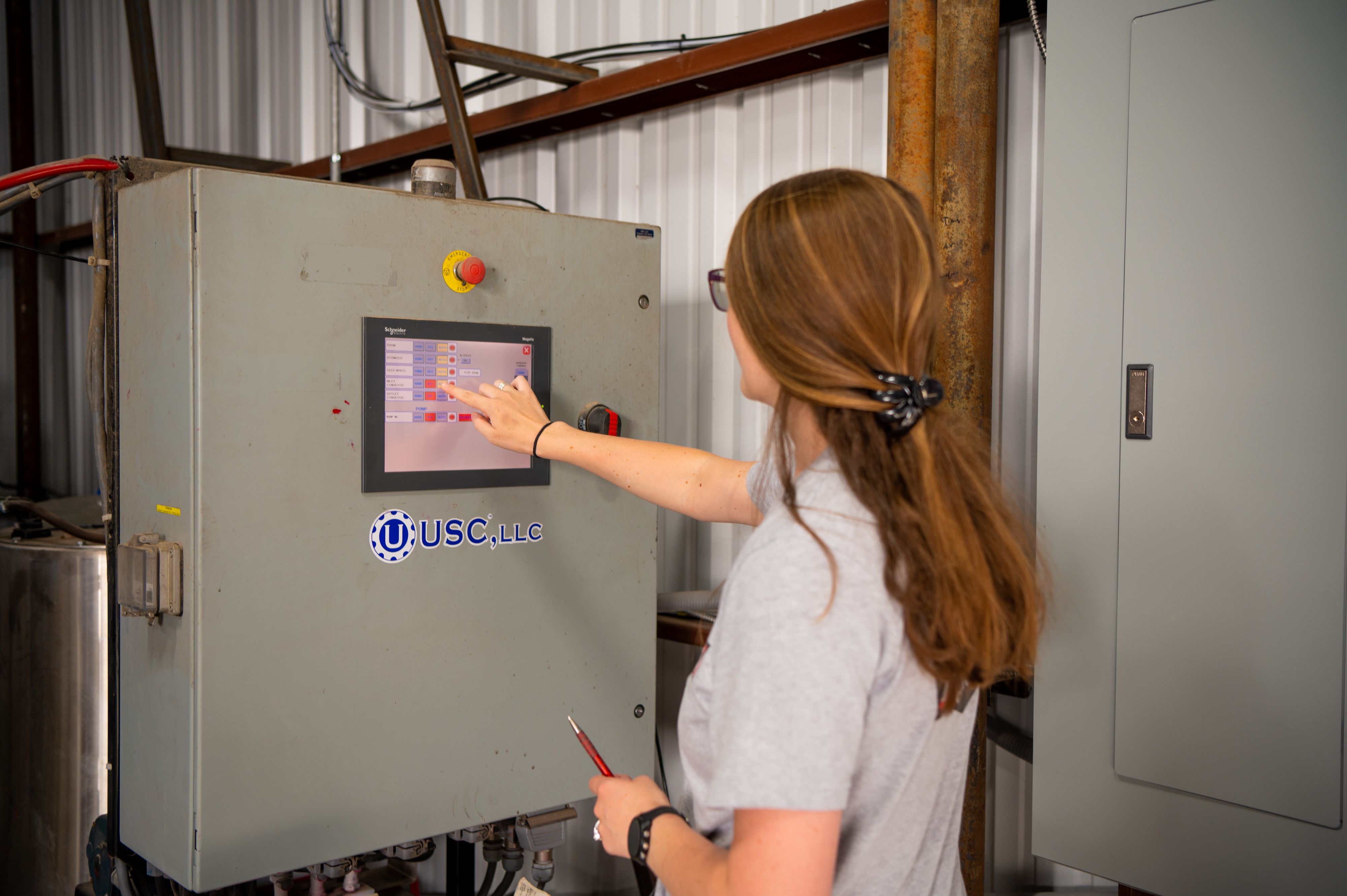
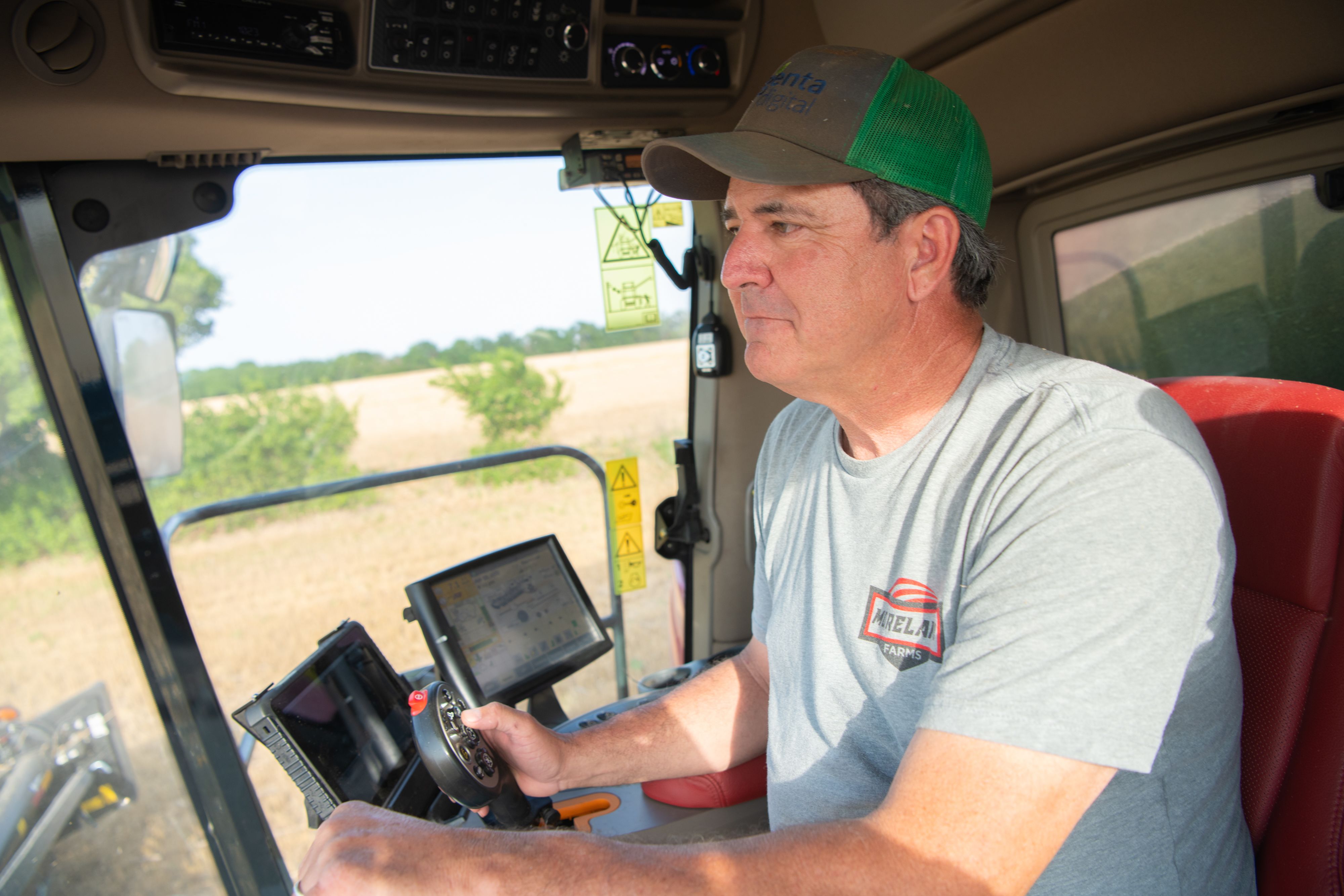
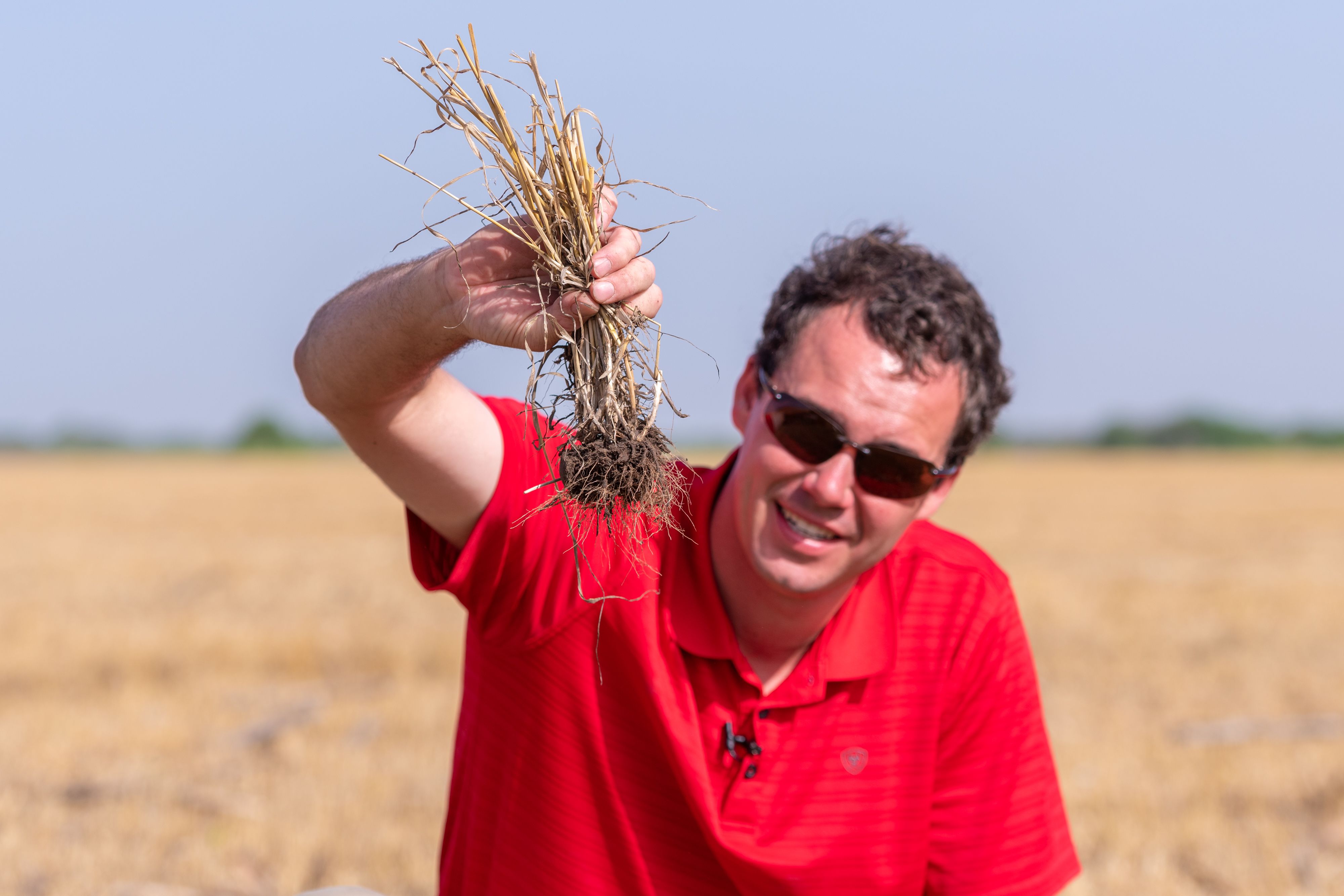

The Morelands park their combines, tractors and grain carts and gather for a dinner break.
The Morelands park their combines, tractors and grain carts and gather for a dinner break.

Liz Moreland programs a seed treater to apply the precise amount of crop protection products needed.
Liz Moreland programs a seed treater to apply the precise amount of crop protection products needed.

Matt Moreland behind the wheel of a combine. The tablets measure the yield and protein content of Moreland Farms’ wheat crops.
Matt Moreland behind the wheel of a combine. The tablets measure the yield and protein content of Moreland Farms’ wheat crops.

James Moreland with a handful of wheat residue that’s been holding the soil in place, protecting it from erosion.
James Moreland with a handful of wheat residue that’s been holding the soil in place, protecting it from erosion.

